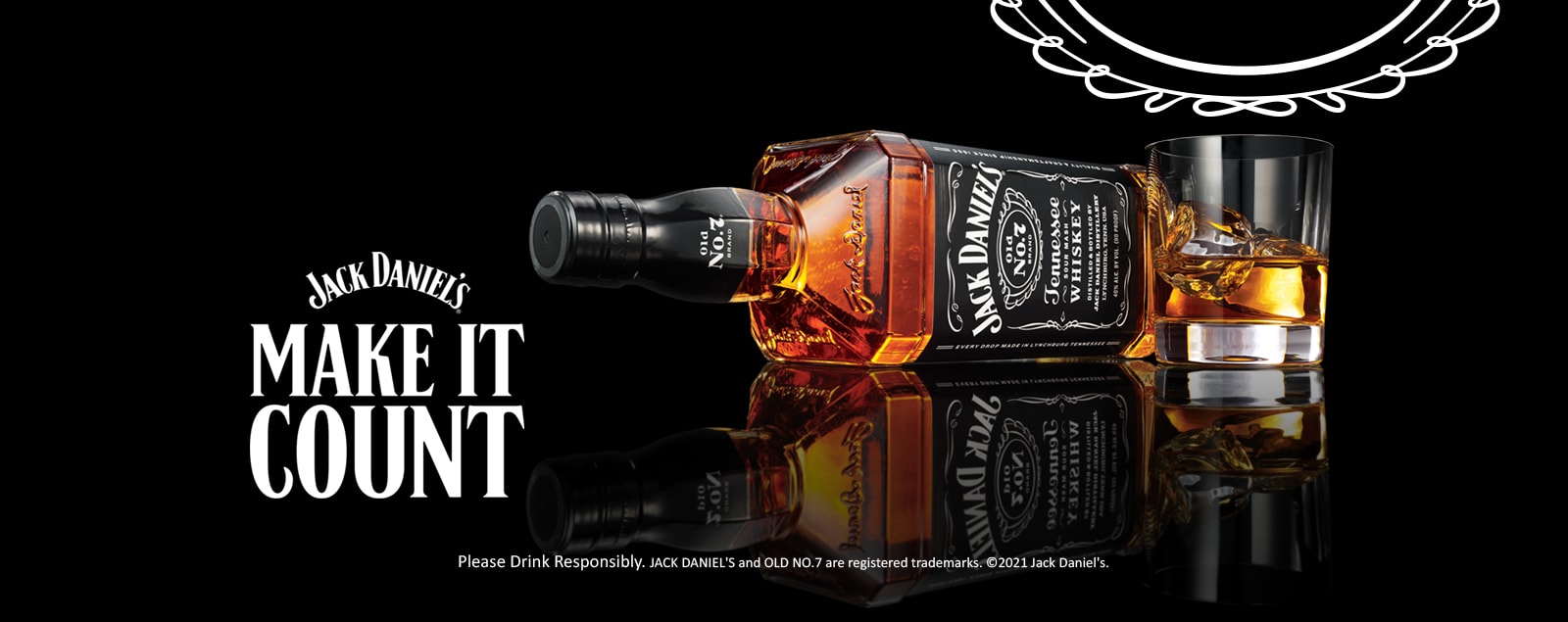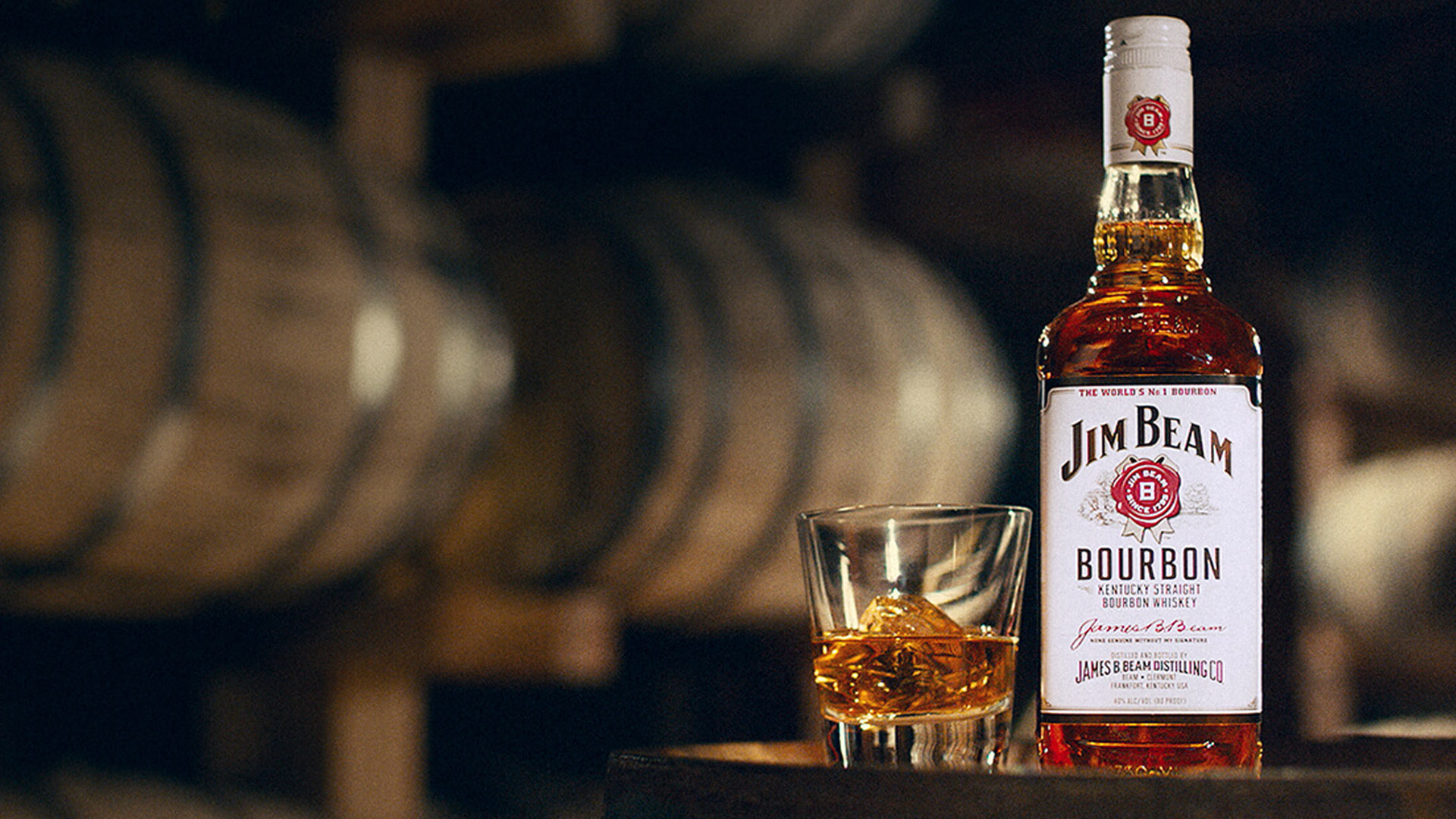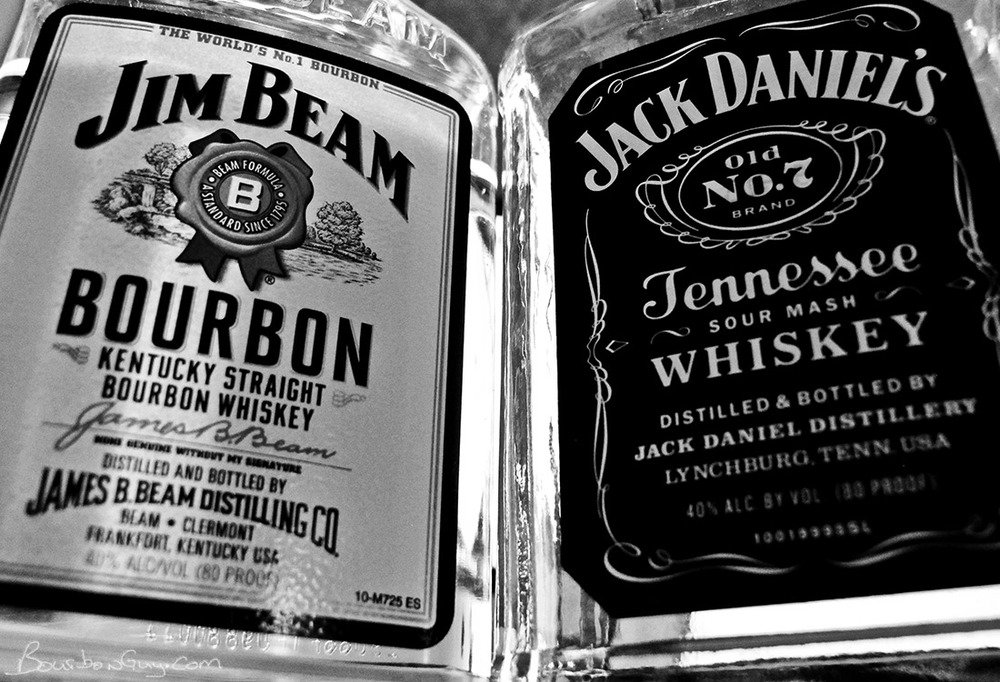Jim Beam and Jack Daniel’s are without question, two of the most ubiquitous brands in American whiskey. It’s nearly impossible to walk into a liquor store without seeing Jack Daniel’s sleek flagship Old No. 7 or a bottle of Jim Beam Original on the shelf.
Owned by Beam Suntory and produced in Clermont, Ky., Jim Beam is a bourbon whiskey. And while bourbon can be produced anywhere in the United States, it must be made from a minimum of 51 percent corn (among other requirements) in order to be called as such.
Jack Daniel’s, a Tennessee whiskey, is owned by the Brown-Forman Corporation. With 80 percent corn in its mash bill, one could be forgiven for confusing it for a bourbon. The difference lies in how and where it’s made. Produced in Lynchburg, Tenn., Jack Daniel’s uses a method known as charcoal mellowing (a.k.a. the “Lincoln County Process”), in which unaged whiskey is filtered through sugar maple charcoal. The process is largely credited with imparting the distinct characteristics that make the brand so beloved among its many fans.
It’s clear that while both brands have their own loyal followings, Americans sure do love their Jack. In 2019, sales of the top whiskey brands had Jack Daniel’s bringing in over $326 million. Jim Beam’s popularity was also evident, with more than $228 million in sales that same year.
Read on for a more in-depth look at how these two iconic American brands stack up.
Origin
Though made in neighboring states, the brands’ origins are separated by more than 70 years. Jim Beam, originally known as “Old Tub Bourbon,” was founded in 1795 by the Kentucky farmer Johannes “Jacob” Beam after he created a new style of whiskey with his father’s recipe and an excess supply of corn.
Jack Daniel’s was established in 1866 by Jasper “Jack” Newton Daniel. After being orphaned, Daniel was taken in by Lynchburg-based minister and distiller Dan Call, and later mentored in whiskey-making by Nathan “Nearest” Green, an enslaved man believed to be America’s first Black master distiller.
Alcohol Content
Once bottled at 90 proof, Jack Daniel’s Old No. 7 was adjusted to 86 proof in 1987 and reduced again in 2002 to 80 proof, the same as Jim Beam’s flagship White Label. Each brand has expressions that pack more punch, such as Jack Daniel’s Single Barrel Barrel Proof, bottled between 125 and 140 proof, and Jim Beam’s 100 proof Single Barrel.


Flavor
VinePair’s tasting of Jim Beam Original yielded aromas of cornbread, caramel, and vanilla with a soft and approachable palate. On the nose, Jack Daniel’s Old No. 7 has vanilla and subtle charcoal aromas that some liken to overripe bananas. On the palate, it has brown sugar and orange, with hints of charcoal and a mellow sweetness.
Use in Cocktails
While both spirits would work perfectly in a Whiskey Sour, an Old Fashioned, or even in some Highball recipes, pairing Jack Daniel’s with Coca-Cola’s sweet notes has been a beloved staple for decades. As David Roth, beverage director at KOJO in Sarasota, Fla. says, “If you’ve never had a Jack and Coke, you don’t know what you’re missing.”


Jack Daniel’s vs. Jim Beam: Why the Pros Love Them
Both brands have garnered die-hard fans, from Frank Sinatra, who is said to have been buried with a bottle of Jack, to Sean Connery, who was the face of Jim Beam for years.
When comparing each brand for the everyday drinker, Roth believes Jim Beam offers consumers a great value. He’s particularly fond of Beam’s Black [Label], calling it “fantastic” for the price. “In a time of hard-to-get bourbons and skimpy allocations, Jim Beam bourbon is a classic everyday whiskey,” he adds.
Although Roth has found that bourbon drinkers are typically not brand-specific, Jack Daniel’s fans break the mold. And while Jack Daniel’s 80 proof version has remained the standard, Roth waxes nostalgic for Old No. 7’s 90 proof expression. “I do miss those extra digits,” he says, but declares that Jack Daniel’s remains “a classic American whiskey nonetheless.”
Article By VinePair
Review by BourbonGuy
Jim Beam (White Label)
Nose: Initially it’s just like standing in the Jim Beam warehouse that they let you go in while visiting the distillery. Oak, alcohol and dust. After a bit of teasing, there is some wet rock, a floral note and a bit of crisp sour apple.
Mouth: Thin. Watered down tasting. Past that: corn, a little vanilla, pencil shavings and more sourness.
Finish: Gentle is the only word for this. Lingering Corn.
Thoughts: I’m not a fan of this one. The thin mouthfeel and sour flavor are off-putting to me. That said, I’ve had decent cocktails made with this so it has it’s place. It’s just not in my glass. Maybe it’s in yours?
Jack Daniels Old No. 7
Nose: The nose on this one is really quite nice. Cherry, vanilla, a hint of chocolate. It reminds me of the chocolate covered cherry cordials you can buy at Christmas.
Mouth: Dusty, dried corn and some vanilla
Finish: A gentle burn with more corn and a lingering dusty bitterness.
Thoughts: Disappointing. The palate does not live up to the nose. But unlike Jim Beam, I can see why it’s popular. This is gentle and sweet enough to appeal to the new or non-whiskey drinker. And since many people never move beyond the first thing they fall in love with, I can see it. Will it have a permanent home on my shelf? No. But that’s not because it’s bad, it’s just meh.
Overall:
If forced to choose between Jack and Jim neat, I’d go Jack. But that said, I doubt I’ll ever be buying either of them for that reason (bars almost always have one halfway decent beer on tap). And as with all whiskey reviews, your milage may vary. Try it yourself. Maybe you’ll love them.


